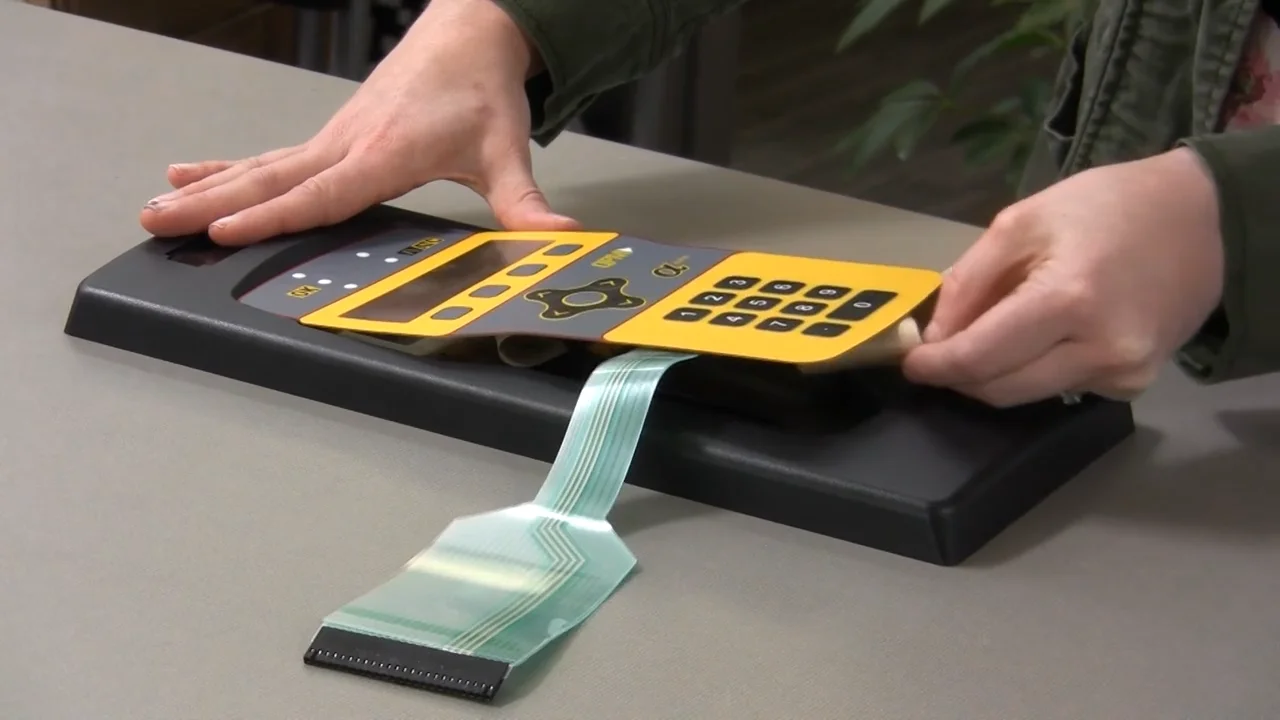Explore Various Types of Membrane Switch Technologies for Your Requirements
Explore Various Types of Membrane Switch Technologies for Your Requirements
Blog Article
Recognizing the Performance of Membrane Switches for Interface Devices
The performance of membrane switches stands for a significant improvement in customer interface style, integrating efficiency with visual versatility. As industries significantly focus on user experience, recognizing the subtleties of membrane switch innovation becomes important.
What Are Membrane Buttons?
Membrane switches are ingenious user interface devices that promote user communication with electronic equipment. These functional elements contain several layers, including a graphic overlay, spacer, and a printed circuit layer. The style permits for a seamless assimilation right into numerous electronic gadgets, enhancing both the aesthetic and useful elements of interface.
Membrane layer buttons are typically used in a wide variety of applications, from household home appliances to commercial equipment and medical devices. Their building and construction commonly features a slim account, making them an ideal option for small layouts. The tactile responses supplied by these switches can be crafted to fulfill specific customer choices, ensuring reliable interaction between the user and the gadget.
Longevity is another considerable benefit of membrane layer switches, as they are immune to dust, wetness, and chemicals, which boosts their life-span in demanding environments. In addition, these switches can be personalized in regards to form, size, and graphic layout, enabling branding and user-specific functions. Overall, membrane layer changes stand for a useful service for enhancing individual experience in digital devices, integrating functionality with visual charm in an efficient way.
Exactly How Membrane Layer Switches Job
Operating on a simple concept, membrane layer switches over use a split construction to register individual input successfully. Each switch is composed of multiple layers, consisting of a printed circuit layer, a spacer layer, and a leading graphic layer, which are designed to function together perfectly. When an individual presses the leading layer, it presses the spacer layer, bringing the conductive elements of the circuit layer right into call with each various other.
This contact creates a closed circuit, signaling the gadget to implement a particular function. The design enables for numerous arrangements, including tactile feedback, which can enhance the customer experience by providing a physical experience upon activation. The materials used in membrane switches usually consist of versatile substratums, such as polyester or polycarbonate, which make sure resilience and durability versus damage.

Key Benefits of Membrane Layer Switches

Another considerable advantage is their compactness. Membrane layer buttons are thin and light-weight, which enables manufacturers to save area in their devices without compromising capability. This function is specifically useful in applications where weight and volume are vital factors to consider.
In addition, membrane layer switches are resistant to dust, moisture, and chemicals, improving their longevity. This durability prolongs their lifespan and minimizes the requirement for regular replacements, causing price savings in time.
Additionally, the tactile comments offered by membrane buttons can be optimized to enhance customer interaction. They can include attributes such as elevated buttons or audible clicks, boosting usability and individual experience.
Applications Across Industries
Customer user interface gadgets utilizing membrane switches are prevalent in a large variety of markets, showcasing their flexibility and capability. Membrane Switch. In the clinical sector, membrane switches are important to gadgets such as diagnostic tools and patient monitoring systems, where their longevity and convenience of cleansing are essential for keeping health requirements. In the auto sector, these buttons are used in control panel controls and infomercial systems, supplying a sleek and contemporary interface for customers.
Additionally, the customer electronics industry gain from membrane switches in devices and handheld devices, where compact layout and user-friendly interfaces boost customer experience. Industrial applications also utilize membrane layer switches over for control board in equipment and automation systems, highlighting their robustness and resistance to harsh settings.
In the aerospace and protection markets, membrane buttons are made use of in cabin controls and equipment, where reliability and efficiency under extreme problems are extremely important. Furthermore, the video gaming market progressively incorporates membrane layer switches in controllers and arcade equipments, adding to an engaging user experience. Overall, the convenience of membrane layer changes allows their extensive use throughout continue reading this numerous sectors, emphasizing their significance in contemporary user interface layout.
Future Trends in Membrane Layer Switch Modern Technology

Additionally, using advanced products, such as polycarbonate and polyester movies, is expected to rise, supplying boosted resilience and resistance to environmental stressors. These products add to the overall durability of membrane layer buttons, making them ideal for harsher industrial applications.
Furthermore, the consolidation of clever innovation, consisting of IoT connection, will certainly enable membrane switches to communicate with other devices and systems, helping with a much more interactive user experience. This trend lines up with the growing need for clever tools throughout different fields, from health care to customer electronics.
Finally, personalization choices are expected to broaden, allowing manufacturers to develop bespoke remedies tailored to certain individual requirements and preferences. These advancements will place membrane layer switches as essential components in the advancement of customer interface modern technology.
Verdict
To conclude, membrane layer switches stand for a crucial advancement in interface modern technology, using a trustworthy and flexible service for diverse electronic applications. Their layered building and construction assists in small design, while attributes such as tactile feedback improve individual interaction. The longevity versus ecological elements further look at this website strengthens their utility across numerous sectors. As improvements in material science and touch noticing technologies proceed, the performance and applicability of membrane layer buttons are anticipated to broaden, reinforcing their relevance in modern-day digital devices.
Report this page